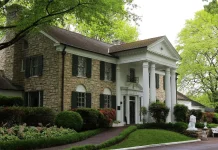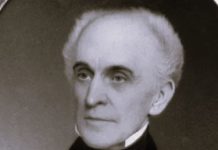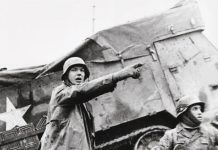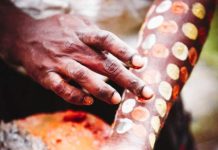Juan Ponce de Leon discovered Florida. His youth was spent in military service in Spain, and during the Granada wars, he shared in predatory valor’s wild exploits. No sooner had the return of the first voyage across the Atlantic given an assurance of a New World, than he hastened to participate in the dangers and the pleasures of adventure in America. He was Columbus’ fellow voyager in his second expedition. In the wars of Hispaniola, he had been a gallant soldier; and Ovando had rewarded him with the government of the eastern province of that island.
From the hills in his jurisdiction, he could see, across the clear waters of a placid sea, the magnificent vegetation of Porto Kico. This distance rendered it still more admirable as it was seen through the tropics’ transparent atmosphere. A visit to the island stimulated avarice, and Ponce aspired to a government. He obtained the station in 1509: accustomed to sanguinary war, he was inexorably severe in his administration: he oppressed the natives; he amassed wealth. But his commission as governor of Porto Rico conflicted with the claims of Columbus’ family, and policy, as well as justice, required his removal.

Juan Ponce de Leon was displaced. Yet, in the midst of an archipelago, and in the vicinity of a continent, what need was there for a brave soldier to pine for the loss of power over a wild though fertile island? Age had not tempered the love of enterprise: he longed to advance his fortunes by the conquest of a kingdom and to retrieve a reputation that was not without a blemish.
Besides, the veteran soldier, whose cheeks had been furrowed by hard service as well as by years, had heard and believed the tale, of a fountain that possessed virtues to renovate the life of those who should bathe in its stream, or give a perpetuity of youth to the happy man who should drink of its ever-flowing waters.
So universal was this tradition that it was credited in Spain, not only by the people and the royal court but also by those distinguished for virtue and intelligence. Nature discovered the secrets to which alchemy had toiled in vain. The elixir of life flowed from a perpetual fountain in the New World, in a country glittering with gems and gold. Juan Ponce de Leon embarked at Porto Rico, on March 3rd, 1513, with a squadron of three ships, fitted out at his own expense. This was for his voyage to fairyland. He touched at Guanahani; he sailed among the Bahamas; but nature’s laws remained inexorable.
On Easter Sunday, March 27th, which the Spaniards call Pascua Florida, a land was seen. It was supposed to be an island, and received the name Florida, from the day it was discovered and from the aspect of the forests. These forests were then brilliant with blossoms and filled with the fresh greenery of early spring. Unfortunately, the weather would not allow the squadron to approach land (April 2nd): the aged soldier went on shore, at the latitude of thirty degrees and eight minutes; some miles, therefore, to the north of St. Augustine. The territory was claimed by Spain on the 8th of April.
Juan Ponce de Leon remained for many weeks to investigate the coast he had discovered. However, the Gulf Stream currents, and the islands, between which the channel was unknown, threatened shipwreck. He doubled Cape Florida; he sailed among the group he named Tortugas; and, despairing of his entire success, he returned to Porto Rico, leaving a trusty follower to continue his research. The Indians had displayed a great deal of determination everywhere. Ponce de Leon remained an old man, but Spanish commerce acquired an additional channel through the Gulf of Florida. Spain gained a province, which imagination could esteem immeasurably rich since its interior was unknown.
The government of Florida was the reward that Juan Ponce de Leon received from the king of Spain. However, the dignity was accompanied by the onerous condition that he colonized the country he was appointed to rule. Preparations in Spain, and an expedition against the Canbbee Indians, delayed his return to Florida. When, after a long interval, he returned in 1521 with two ships to take possession of his province and select a site for a colony, his company was attacked by the Indians with implacable fury.
Many Spaniards were killed; the survivors had to hurry to their ships; Juan Ponce De Leon, mortally wounded by an arrow, returned to Cuba to die. So ended the adventurer who craved immeasurable wealth and perpetual youth. The discoverer of Florida desired immortality on earth and gained its shadow. The Peter Martyr map of 1511 already showed an inland place called Bimini. Here the fountain of youth was generally supposed to exist, and its discovery was the ambition of various explorers, but only incidentally. The fountain of youth had no place in official documents of that time, and Balboa like others sought gold and power.
Read More – Narragansett – The People of the Small Point







